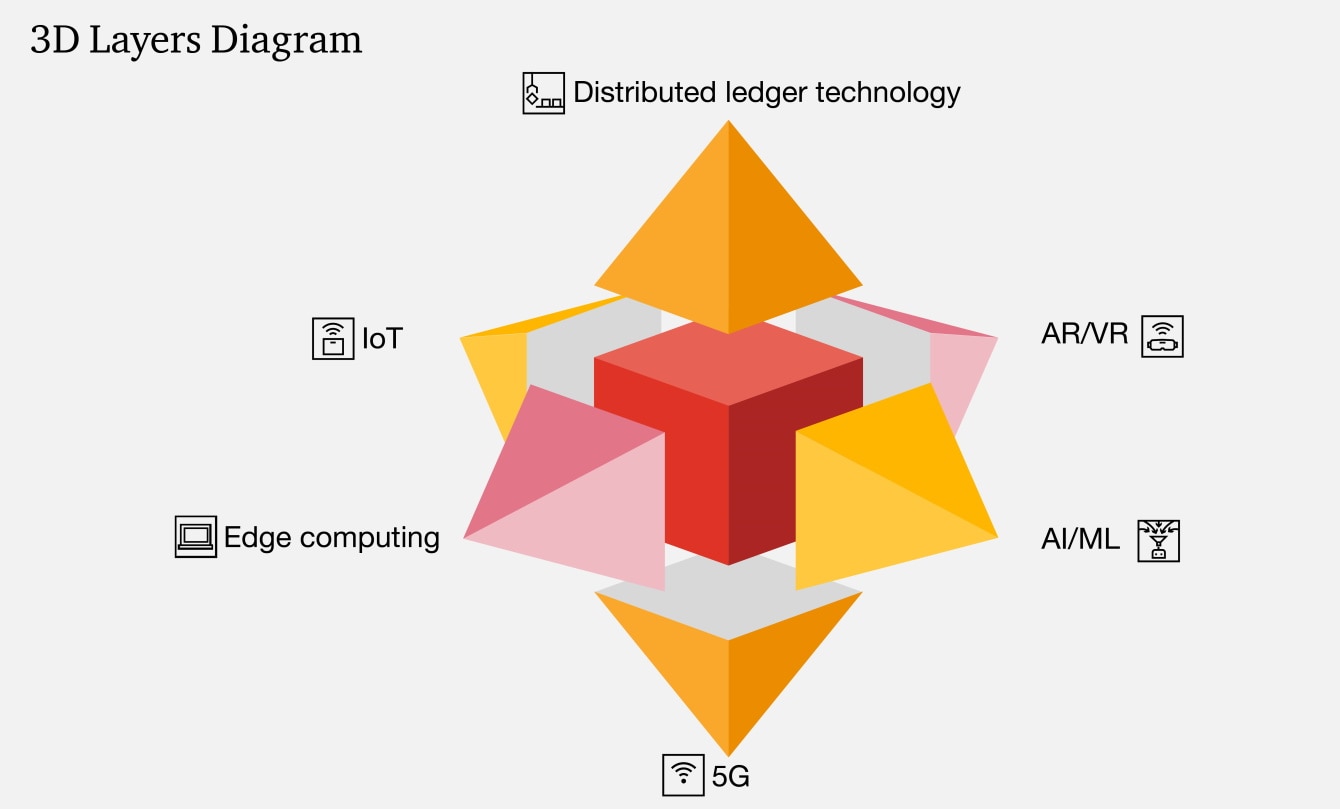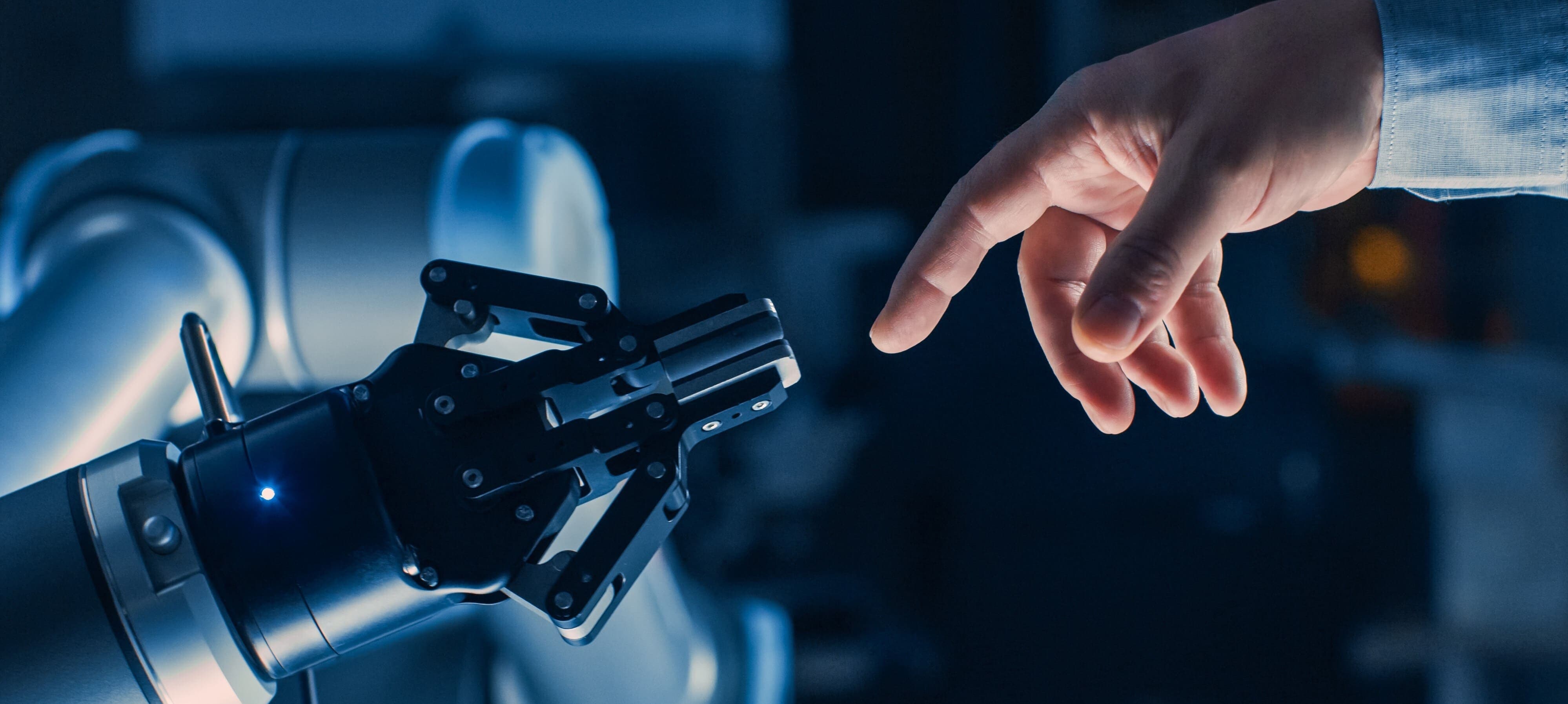{{item.title}}
{{item.text}}

{{item.text}}
Web 3.0 is one such disruptor that is gaining popularity with the advent of virtual phenomena like the metaverse and non-fungible tokens (NFTs). However, it is not a new development and has origins that can be traced back to 2014, when the term was coined by an English computer scientist.1
Web 3.0 refers to the upcoming third generation of the internet which will use emerging technologies such as semantic web, natural language processing (NLP), distributed ledger technology (DLT), internet of things (IoT), edge computing, 5G, 3D graphics and augmented reality (AR)/virtual reality (VR) to create a more intelligent, connected and open web experience. It is a conceptual term that encompasses the convergence of various emerging technologies. Its key highlight is that it envisions the creation of a decentralised web where the community has total ownership of its data and users are provided with an efficient and hyper-personalised experience with the merging of the physical and virtual worlds.
Web 3.0 aims to prioritise privacy through decentralisation. In such an environment, users will have more control over their data, thereby increasing digital trust and loyalty, and also providing a more personalised and immersive experience.
The figure below shows the emerging technologies powering Web 3.0.
Source: PwC
The world wide web has gone through two major stages of evolution.
The first stage is called Web 1.0. It involved static pages, frames, design elements of a web page and pages built using a common gateway interface (CGI). It contains only a readable web page and only a very few people are involved to take care of the larger population using it.
Web 2.0 consisted of innovations such as smartphones, web applications, web-oriented architecture and social networks. It allows users to make, share, collaborate and interact with others without any need for web design or publishing skills.
Web 3.0 intends to shift ownership from middlemen/gatekeepers who are instrumental in Web2.0, such as social media platforms, search engines, governments and banks, back to the user through a stack of technologies based on a decentralised web ledger. Users would own their data, identity, content and algorithms, and participate as part owners.
Evolving from Web 2.0, which primarily stores data in centralised locations, Web 3.0 aims to provide decentralised web access to connected data, i.e. via a decentralised web network of many peer-to-peer nodes or servers, also known as DLT. Web 3.0 applications or decentralised web apps (dApps) will run on such decentralised web networks such as blockchain. Further, to make the network stable and secure, network participants will be financially incentivised via tokens such as cryptocurrency to provide the highest-quality services.
Web 3.0 will be trustless, i.e. participants will be able to interact with each other as well as brands without requiring a trusted intermediary. It will also be permissionless, allowing anyone to participate in the transaction without authorisation from a governing body. DLT-based solutions such as blockchain allow for smart contracts which power trustless transactions without the presence of an intermediary. Web 3.0 will also be permissionless, as neither buyers or sellers would require permission from a third party to conduct business.
Web 3.0 will have the capacity to be everywhere simultaneously. It will not only be limited to smartphones and computers but also include most devices around us such as automobiles, air conditioners and fridges. These devices will be connected to the internet through IoT sensors and data from these devices will be computed using 5G connectivity and edge computing. The latter aims to reduce latency by bridging the distance between a device and a cloud-based processor. 5G would enable download speeds up to 100 times faster than 4G.
An essential part of Web 3.0 will be the ability of everyday devices to understand the meaning of the data they collect via IoT sensors. Web 3.0 looks to use machines/computers to interpret the data collected from daily-use devices such as automobiles, refrigerators, parking metres and heart monitors. Artificial intelligence (AI)/machine learning (ML) will be core enablers of semantics in Web 3.0. Such technologies will enable machines to decode the collected data and provide better customer experience. Web 3.0 also looks to deliver better results with semantic search, i.e. search based on meaning instead of keywords.
Web 3.0 will blur the line between the digital and physical worlds with the use of 3D graphics technology along with AR/VR devices. It will extensively use 3D graphics in websites, services and sectors such as online games, e-commerce and real estate. While 2D graphics is already extensively utilised by Web 2.0, technologies like VR will make Web 3.0 an immersive experience by considering all our senses for interaction and redefining our daily experiences.
Web 3.0 and technologies such as DLT, 5G, 3D graphics and IoT will transform businesses. From delivering intuitive interactions with highly contextual and personalised information to offering more control over data through decentralised web and permissionless network protocols, Web 3.0 will change the way businesses utilise technologies.
Customer experience
Web 3.0 aims to unify the physical and virtual worlds using spatial technologies like AR/VR and 3D graphics. Such a potential unification has been instrumental behind the development of the metaverse, a virtual reality network where users can exist as avatars. The metaverse offers an immersive virtual experience. Brands will need to build their presence in the metaverse for customers to be able to experience products in the virtual world as well.
Customer privacy and fraud prevention
Businesses can make use of blockchain-powered smart contracts and develop an environment of trust for their customers for situations such as payments received for services. Smart contracts built on blockchain will help in executing certain tasks based on predetermined conditions, thereby reducing potential fraud.
4. Optimised operations
Using the power of spatial web and IoT, businesses can build digital twins of their brick-and-mortar stores or develop geographical models for their logistics functions. This helps businesses to lay the foundation for monitoring and optimising by using a digital twin as a testing environment. They can also verify the impact of any new changes on their operations or supply chains. Additionally, they will benefit from faster computing of the data collected via IoT sensors which use edge computing technology.
Web 3.0 is expected to provide a plethora of transformation opportunities to businesses across sectors and value chains. At this critical juncture of technological transformation, we can help you stay ahead of the curve by planning for the new digital future.
{{item.text}}

{{item.text}}




